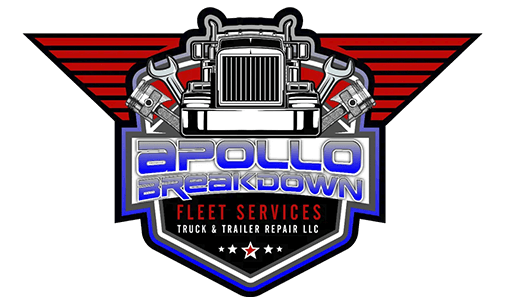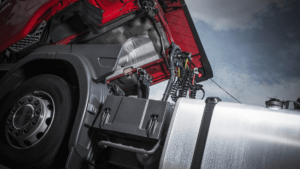Encountering a truck breakdown in a remote area can be a daunting and stressful experience, especially when far from immediate assistance. Understanding how to effectively manage such a situation is crucial for truck owners to ensure safety, minimize downtime, and prevent further damage to their vehicles. This guide will provide essential steps and tips on what to do when faced with a truck breakdown in an isolated location, from initial safety precautions to troubleshooting common issues and securing help. Equip yourself with the knowledge to handle these unexpected challenges confidently and efficiently.
Initial Preparation
Before embarking on any journey, especially into remote areas, it’s essential to be prepared for potential truck breakdowns. Start by conducting a thorough pre-trip inspection to ensure all vehicle systems are in good working order. Carry a well-stocked emergency kit, including tools, spare parts, a first-aid kit, and essential supplies like water and non-perishable food.
Additionally, ensure your communication devices are fully charged and consider carrying a portable charger. Familiarize yourself with the route and identify any service stations or towns along the way. Having a list of emergency contact numbers, including roadside assistance, can also be invaluable. By taking these proactive steps, you can significantly reduce the stress and impact of a breakdown in an isolated location.
Do you want to restore the performance of your vehicle? We can help you, contact us now!
During the Breakdown
When a breakdown occurs, the first priority is safety. Pull over to the side of the road, if possible, and turn on your hazard lights to alert other drivers. Set up reflective triangles or flares around your truck to increase visibility, especially during low light conditions. Once you’ve secured the area, assess the situation calmly. Check if there are any immediate dangers, such as smoke or leaking fluids, which may require you to move further away from the truck.
Use your communication devices to contact roadside assistance or emergency services, providing them with your exact location and details about the vehicle’s condition. While waiting for help, avoid leaving the vehicle unless it is absolutely necessary and safe to do so. Keeping a clear head and following these steps can help ensure your safety and facilitate a quicker resolution to the breakdown.
We recommend you to see this article: SEMI-TRUCK TRANSMISSION TROUBLES: SIGNS AND SOLUTIONS
Immediate Actions
After ensuring your safety during a breakdown, it’s time to take immediate actions to diagnose and potentially fix the issue. Begin by consulting your truck’s manual to troubleshoot common problems. Check vital components like the battery, tires, fuel system, and engine for any obvious issues. If you have the necessary tools and parts, you might be able to address minor problems such as a flat tire, dead battery, or blown fuse.
If the issue is beyond your capability, it’s crucial to relay accurate information to roadside assistance or a mechanic. Document any warning lights or unusual sounds, as these details can aid in diagnosing the problem. Keep communication lines open and stay informed on the estimated time of arrival for assistance. Acting swiftly and efficiently during these initial moments can greatly reduce downtime and help you get back on the road faster.
¿Looking for professional help? Our team is 100% trained to help you and solve any problem, visit our website now!
Long-Term Solutions
To prevent future breakdowns and ensure long-term reliability, it’s essential to implement a robust maintenance routine for your truck. Regularly scheduled inspections by a certified mechanic can identify and address potential issues before they lead to a breakdown. Invest in high-quality replacement parts and fluids to ensure optimal performance. Keeping detailed records of all maintenance work can help track the truck’s condition and predict when parts might need replacing.
Additionally, consider enrolling in a comprehensive roadside assistance program that covers remote areas. This can provide peace of mind and swift support when unexpected issues arise. Finally, ongoing driver training on emergency protocols and basic troubleshooting can further minimize downtime and enhance safety. By focusing on these long-term strategies, you can significantly reduce the risk of future breakdowns and maintain the efficiency and reliability of your truck.
We recommend you to see this article: COMMON TRAILER SUSPENSION PROBLEMS AND SOLUTIONS
Post-Breakdown Steps
Once your truck is back on the road, it’s important to take several post-breakdown steps to prevent recurrence and ensure any underlying issues are fully resolved. Begin by scheduling a comprehensive inspection with a trusted mechanic to verify that the repair was effective and to check for any additional damage that might have occurred during the breakdown. Update your maintenance records with detailed notes on the incident, including what caused the breakdown and how it was fixed.
This information can be invaluable for future troubleshooting and maintenance planning. Reflect on the experience to identify any additional preparations that could help in similar situations, such as specific tools or spare parts that were needed. Lastly, review and restock your emergency kit, ensuring it remains fully equipped for future journeys. By diligently following these post-breakdown steps, you can enhance your truck’s reliability and be better prepared for any future challenges.
Our team is ready 24/7 to assist you, contact us here!
Call us for truck repair road service here. We are in Florida, Texas and Georgia. Open 24/7.






